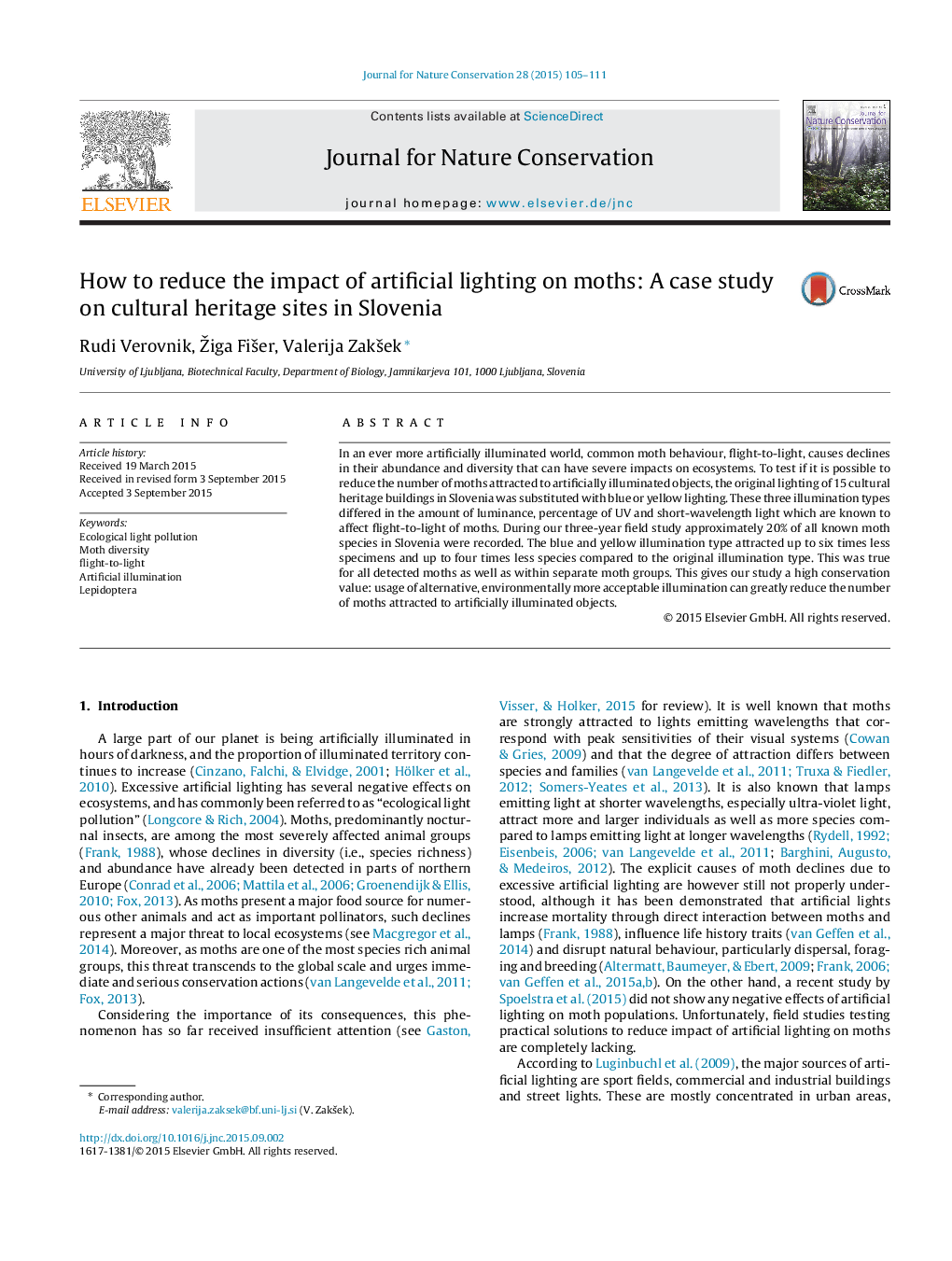| Article ID | Journal | Published Year | Pages | File Type |
|---|---|---|---|---|
| 4399790 | Journal for Nature Conservation | 2015 | 7 Pages |
In an ever more artificially illuminated world, common moth behaviour, flight-to-light, causes declines in their abundance and diversity that can have severe impacts on ecosystems. To test if it is possible to reduce the number of moths attracted to artificially illuminated objects, the original lighting of 15 cultural heritage buildings in Slovenia was substituted with blue or yellow lighting. These three illumination types differed in the amount of luminance, percentage of UV and short-wavelength light which are known to affect flight-to-light of moths. During our three-year field study approximately 20% of all known moth species in Slovenia were recorded. The blue and yellow illumination type attracted up to six times less specimens and up to four times less species compared to the original illumination type. This was true for all detected moths as well as within separate moth groups. This gives our study a high conservation value: usage of alternative, environmentally more acceptable illumination can greatly reduce the number of moths attracted to artificially illuminated objects.
